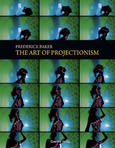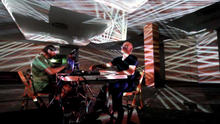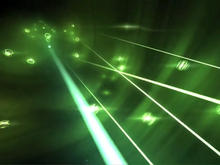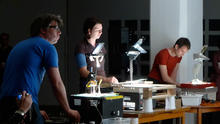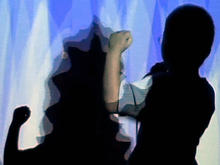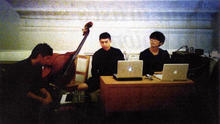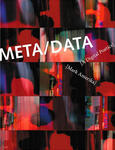1 Room – 3 Aspects
(2007)by Kurt Laurenz Theinert (projections), Alexandra Mahnke (dance) and Markus Birkle (guitar). They create and interpret a space with the tools of their respective arts, with light, movement and sound.
The three aspects in this multilayered audiovisual collaboration originate from a space – here, it’s the gallery space. For the listeners/viewers, themselves integral part of that same space, a special audiovisual room for perception opens up, and the three different aspects become deeper layer by layer.
The Visual Piano is a unique instrument, designed to create light graphics and moving images in space. It was developed and produced by light artist and photographer Kurt Laurenz Theinert, together with software programmers Roland Blach and Phillip Rahlenbeck. Theinert creates and projects these graphics live and in real time.
For Alexandra Mahnke, who holds a diploma in modern stage dance from the Folkwang-Hochschule in Essen, dance is communication in space, a three-dimensional art beyond the classic stage situation. Her communication is with other dancers, with the audience, or, at this event, with additional light elements that define the shape of both body and space.
The guitar improvisations of Markus Birkle are the third aspect. If you already know his virtuoso soundscapes, accompanying silent movies like Nosferatu, and maybe also his playing with Die Fantastischen Vier or Netzer, you won’t need any explanations. To anyone else: this is the perfect opportunity to witness the audiovisual skills of an exceptional musician.
Source: Fluctuating Images
